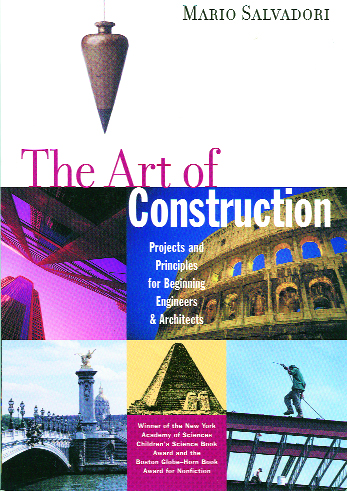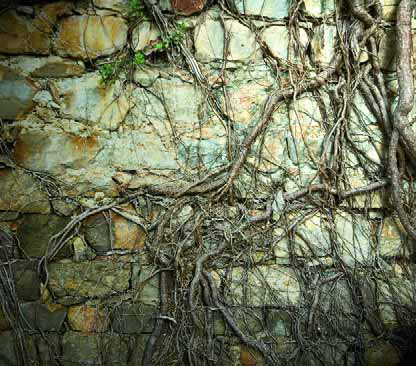WaterShapes
‘Any time that you can introduce water or the sound of water into an environment, the space is instantly transformed.’ – Geoffrey Lew Rausch, FASLA, 2006 recipient of the Henry Shaw Medal for his work at the Missouri Botanical Garden During the past three decades, the Missouri Botanical Garden has undergone a wonderful transformation, and much of it has been about water. In that span, more than a dozen fountains and waterfeatures have been added to the 79-acre grounds of what many have long been considered to be one of the top three public gardens in the world – and happily, our firm, Hydro Dramatics of St. Louis, has had the privilege of working on all of them as project leaders. These installations have ranged from the simple to the complex. Whether serene or splashing, barely bubbling or shooting skyward, our work has added a unique spirit and drama to many already-beautiful sites. In addition, they’ve involved us in memorable collaborations with the garden’s creative staff, generous sponsors and the more than 850,000 people who come to the garden annually. For our part, the diversity of the watershapes
It's no secret among those who've been in my segment of the watershaping industry as long as I have that vinyl-liner pools weren't as attractive as their gunite counterparts in the old days: The finishes weren't very interesting, options in colors and patterns were limited, the only type of coping we used was made of aluminum and most liners were only available in rectangular configurations in a limited number of standard sizes. Despite those shortcomings, however, vinyl pools caught on, and in a big way, and I have watched every stage of that development for the more than three decades I've
It's no secret among those who've been in my segment of the watershaping industry as long as I have that vinyl-liner pools weren't as attractive as their gunite counterparts in the old days: The finishes weren't very interesting, options in colors and patterns were limited, the only type of coping we used was made of aluminum and most liners were only available in rectangular configurations in a limited number of standard sizes. Despite those shortcomings, however, vinyl pools caught on, and in a big way, and I have watched every stage of that development for the more than three decades I've
For the last few months, the Getty Villa in Malibu, Calif., has hosted a special exhibit called "Stories in Stone," which is all about the nature, preservation and conservation of stone mosaics found in the ancient Roman cities of North Africa. Even a quick walk through the halls is enough to show why these art objects speak to us across the millennia: Their colors are vivid, their decorative capacity is amazing, their durability is unrivalled and their sheer beauty is a delight even to the unschooled eye. At best, tile mosaics of any caliber are both aesthetic and functional, timeless and contemporary, subtle and dramatic. They are also versatile - interior or exterior, commercial or residential - and have long been among the very best media available to designers and architects looking to infuse their work with the
For the last few months, the Getty Villa in Malibu, Calif., has hosted a special exhibit called "Stories in Stone," which is all about the nature, preservation and conservation of stone mosaics found in the ancient Roman cities of North Africa. Even a quick walk through the halls is enough to show why these art objects speak to us across the millennia: Their colors are vivid, their decorative capacity is amazing, their durability is unrivalled and their sheer beauty is a delight even to the unschooled eye. At best, tile mosaics of any caliber are both aesthetic and functional, timeless and contemporary, subtle and dramatic. They are also versatile - interior or exterior, commercial or residential - and have long been among the very best media available to designers and architects looking to infuse their work with the
Most watershapers know that the work we do requires knowledge across a wide range of disciplines - a cluster of skills that includes, among others, geology, materials science, structural engineering, construction techniques, hydraulics, architecture, art history, color theory, drafting and more. As jacks of all trades, we don't really need to be "expert" on all of these fronts, but without a working knowledge of the technical and aesthetic disciplines involved in creating quality work, it's difficult to ensure the success of any given project. There's no question that some of us are better at certain disciplines than others, and it's up to us to recognize our strengths and weaknesses and fill in the gaps of our understanding as best we can. When it comes to structural engineering, for example, few of us qualify as bona fide engineers: That takes years of schooling and rigorous licensing processes. But almost all of us work with precise structural designs that are specific to the vessels and associated structures we design and/or build. In other words, we may not be engineers, but we sure as heck need to
Most watershapers know that the work we do requires knowledge across a wide range of disciplines - a cluster of skills that includes, among others, geology, materials science, structural engineering, construction techniques, hydraulics, architecture, art history, color theory, drafting and more. As jacks of all trades, we don't really need to be "expert" on all of these fronts, but without a working knowledge of the technical and aesthetic disciplines involved in creating quality work, it's difficult to ensure the success of any given project. There's no question that some of us are better at certain disciplines than others, and it's up to us to recognize our strengths and weaknesses and fill in the gaps of our understanding as best we can. When it comes to structural engineering, for example, few of us qualify as bona fide engineers: That takes years of schooling and rigorous licensing processes. But almost all of us work with precise structural designs that are specific to the vessels and associated structures we design and/or build. In other words, we may not be engineers, but we sure as heck need to
Through the years in these pages and elsewhere, I've been a persistent critic of the shortcomings of the watershaping trades in general - and especially of the pool and spa industry in which I've operated for more than 25 years. Sometimes I've been harsher than others, but my intent has invariably been to define the difference between quality work that elevates the trade and the junk that's held back our industry's reputation. I've never named names, but I've been particularly hard on practitioners who seem eternally stuck in old ways of thinking and working: Their work seldom lines up with the best efforts of which the industry is capable. Just recently, I had a long talk with WaterShapes' editor in which we discussed the development of a new approach to
Through the years in these pages and elsewhere, I've been a persistent critic of the shortcomings of the watershaping trades in general - and especially of the pool and spa industry in which I've operated for more than 25 years. Sometimes I've been harsher than others, but my intent has invariably been to define the difference between quality work that elevates the trade and the junk that's held back our industry's reputation. I've never named names, but I've been particularly hard on practitioners who seem eternally stuck in old ways of thinking and working: Their work seldom lines up with the best efforts of which the industry is capable. Just recently, I had a long talk with WaterShapes' editor in which we discussed the development of a new approach to
On just about any site, we run into hidden obstacles - everything from underground pipes or leftover debris from other construction to myriad other surprises - and many of them are easily dealt with either by removing the barriers or redirecting things around them. But what happens when the obstacle is alive and growing and you can't remove it or escape from it? In these situations, you have to do your research, get creative and, above all, take the matter seriously. Case in point is a garden I'm designing for a project with David Tisherman - the one discussed previously where I'm developing a white


















